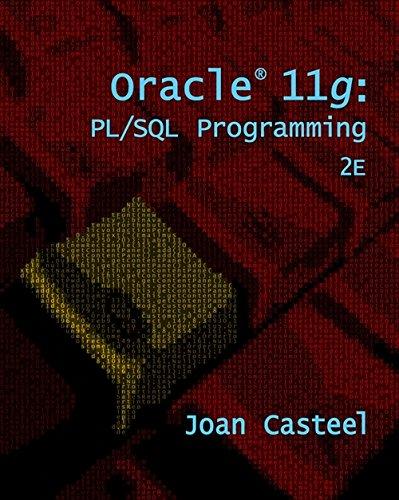Question
Fix this Java code Code:- import java.io.BufferedReader; import java.io.IOException; import java.io.InputStreamReader; import java.nio.charset.StandardCharsets; import java.util.*; public class Main { private static void checkCycle_getMaxRating(ArrayList inputLines) {
Fix this Java code
Code:-
import java.io.BufferedReader;
import java.io.IOException;
import java.io.InputStreamReader;
import java.nio.charset.StandardCharsets;
import java.util.*;
public class Main
{
private static void checkCycle_getMaxRating(ArrayList
{
HashMap
int nodeNum = 0;
for(String line : inputLines)
{
line = line.trim();
String[] nodes = line.split("|");
String src = nodes[0].trim();
String dest = nodes[1].trim();
if(!idToIndex.containsKey(src))
{
idToIndex.put(src, nodeNum);
nodeNum++;
}
if(!idToIndex.containsKey(dest))
{
idToIndex.put(dest, nodeNum);
nodeNum++;
}
}
int n = idToIndex.size();
int[][] edges = new int[n][2];
String[] rates = new String[n];
int k = 0;
for(String line : inputLines)
{
//System.out.println(convert);
line = line.trim();
if(line.contains(" ")) continue; //??
String[] nodes = line.split("|");
String src = nodes[0].trim();
String dest = nodes[1].trim();
int start = idToIndex.get(src);
int end = idToIndex.get(dest);
edges[k] = new int[]{start, end};
rates[k] = nodes[2].trim();
k++;
}
boolean isCyclic = checkCyclic(n, edges);
if(isCyclic)
{
System.out.println("cyclic");
}
else
{
System.out.println("noncyclic");
}
}
private static boolean checkCyclic(int n, int[][] edges)
{
if(edges.length != n-1) return false;
List> graph = new ArrayList();
for(int i=0; i { graph.add(new ArrayList()); } for(int[] e : edges) { graph.get(e[0]).add(e[1]); } Queue Set q.add(0); seen.add(0); while(!q.isEmpty()) { int node = q.poll(); for(int nei : graph.get(node)) { if(seen.contains(nei)) { continue; } seen.add(nei); q.add(nei); } } return seen.size() } public static void main(String[] args) throws IOException { InputStreamReader reader = new InputStreamReader(System.in, StandardCharsets.UTF_8); BufferedReader in = new BufferedReader(reader); String line; ArrayList while ((line = in.readLine()) != null) { //System.out.println(line); inputLines.add(line); } Main.checkCycle_getMaxRating(inputLines); } } QUESTION 
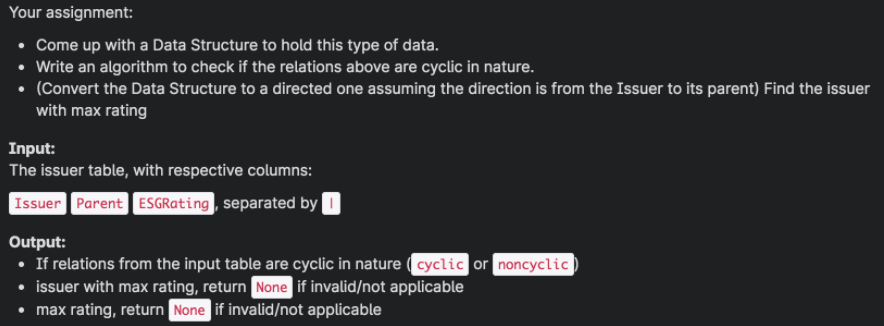
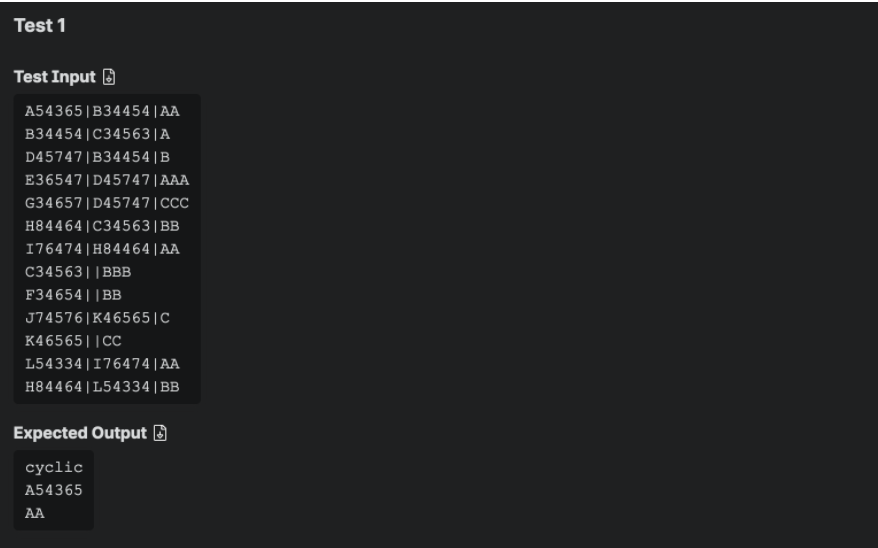
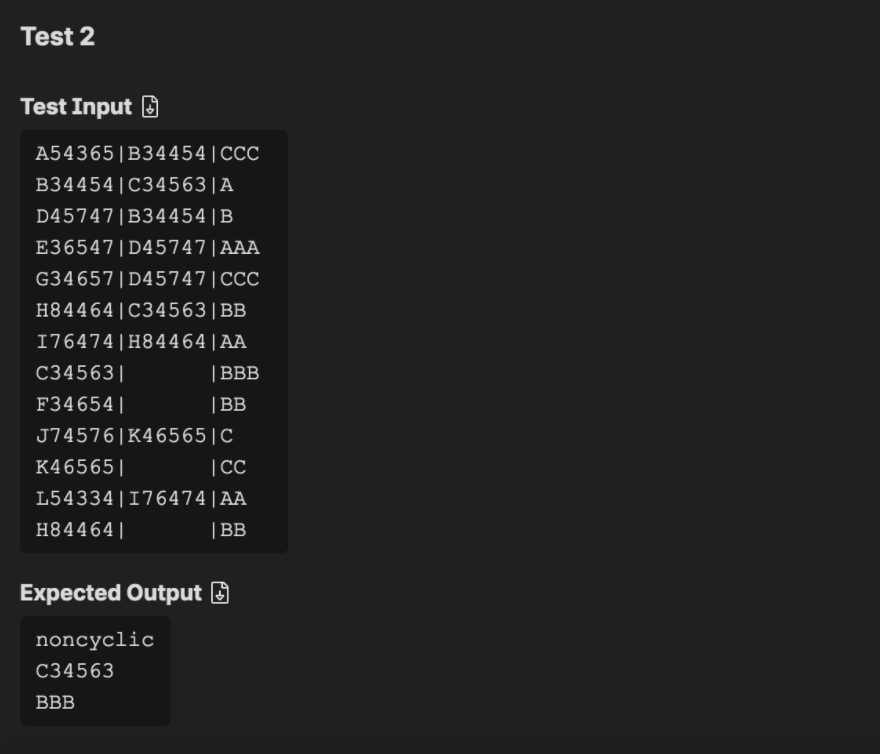
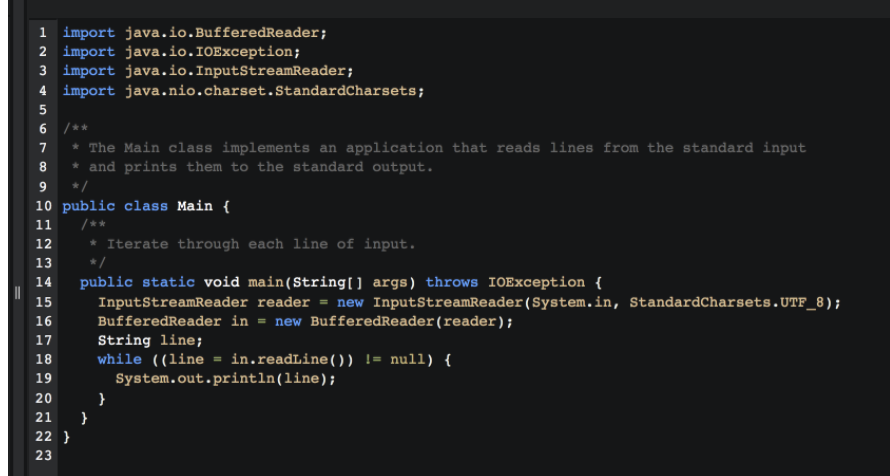
Step by Step Solution
There are 3 Steps involved in it
Step: 1

Get Instant Access to Expert-Tailored Solutions
See step-by-step solutions with expert insights and AI powered tools for academic success
Step: 2

Step: 3

Ace Your Homework with AI
Get the answers you need in no time with our AI-driven, step-by-step assistance
Get Started


